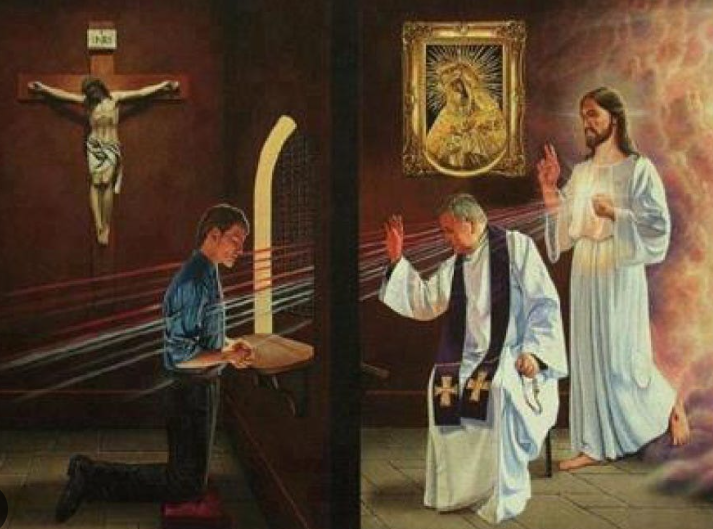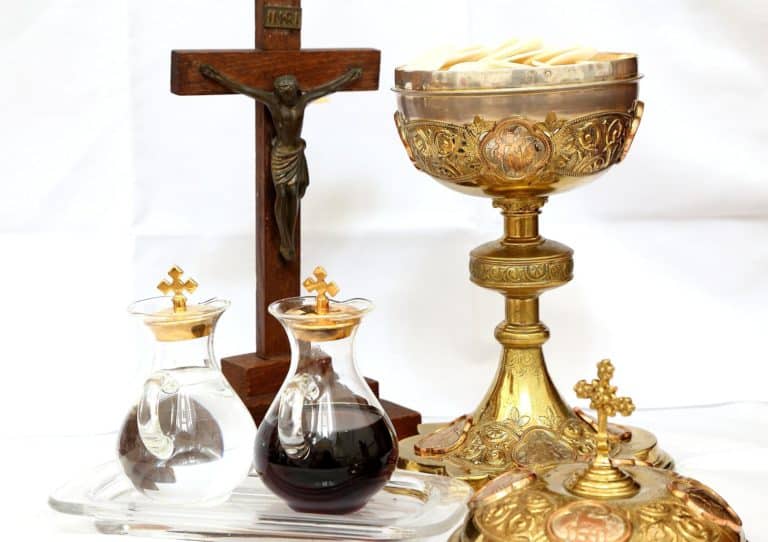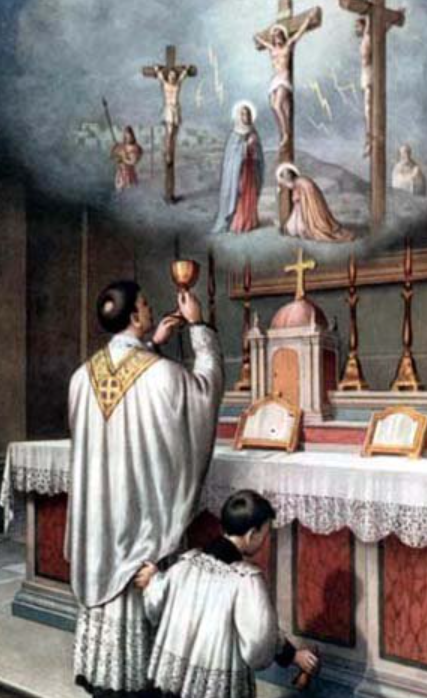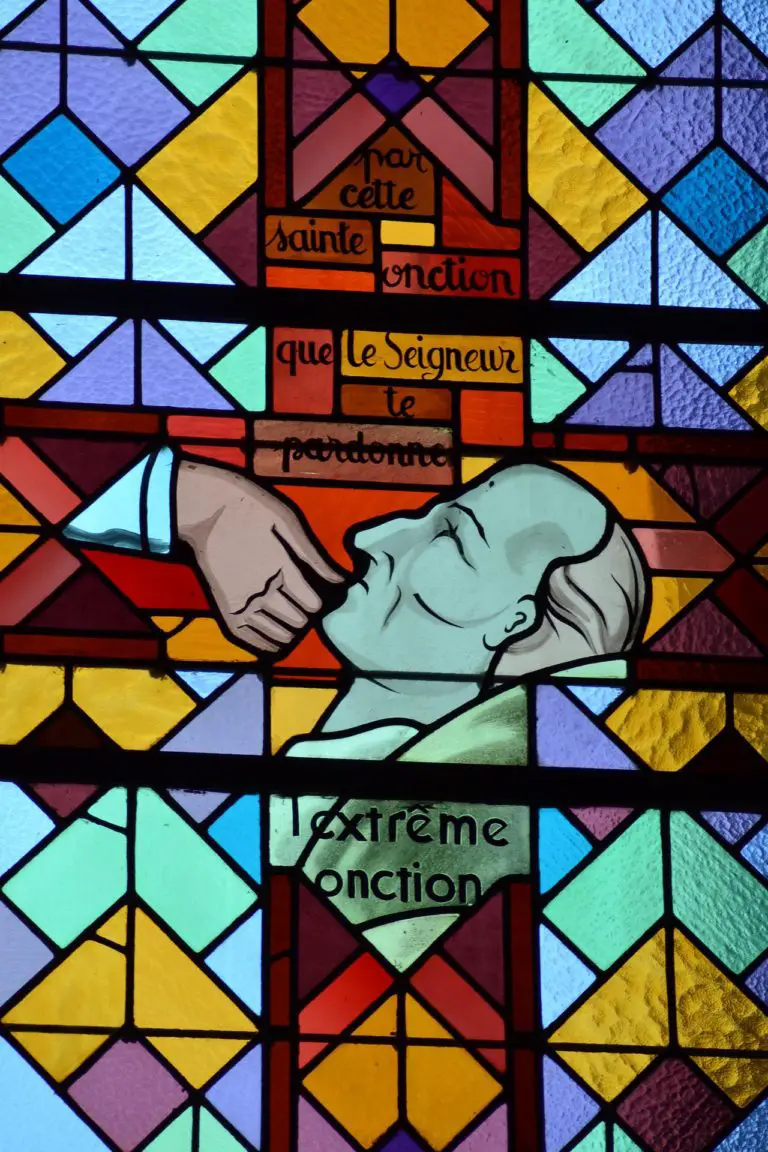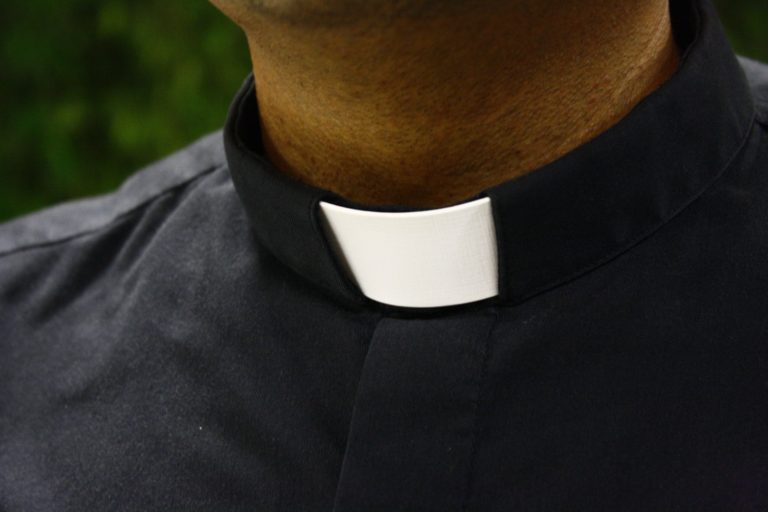Why Can’t Women Be Priests? The Catholic Church’s True Answer
Why can’t women be priests?
This question continues to arise in our modern society where equality in all professions is greatly valued. Yet the Catholic Church has maintained its 2,000-year tradition of a male-only priesthood throughout the centuries. In 1994, Pope John Paul II addressed this matter with definitive clarity, declaring that:
“the Church has no authority whatsoever to confer priestly ordination on women, and this judgment is to be definitively held by all the Church’s faithful.”
Contrary to what many might expect, this teaching hasn’t diminished vocations to the priesthood. The Vatican reports remarkable growth in seminarian numbers – an increase of 69.87% between 1978 and 2008. Even more astounding are the figures from Africa and Asia, with vocations rising by 238.50% and 124.01% respectively over two decades.
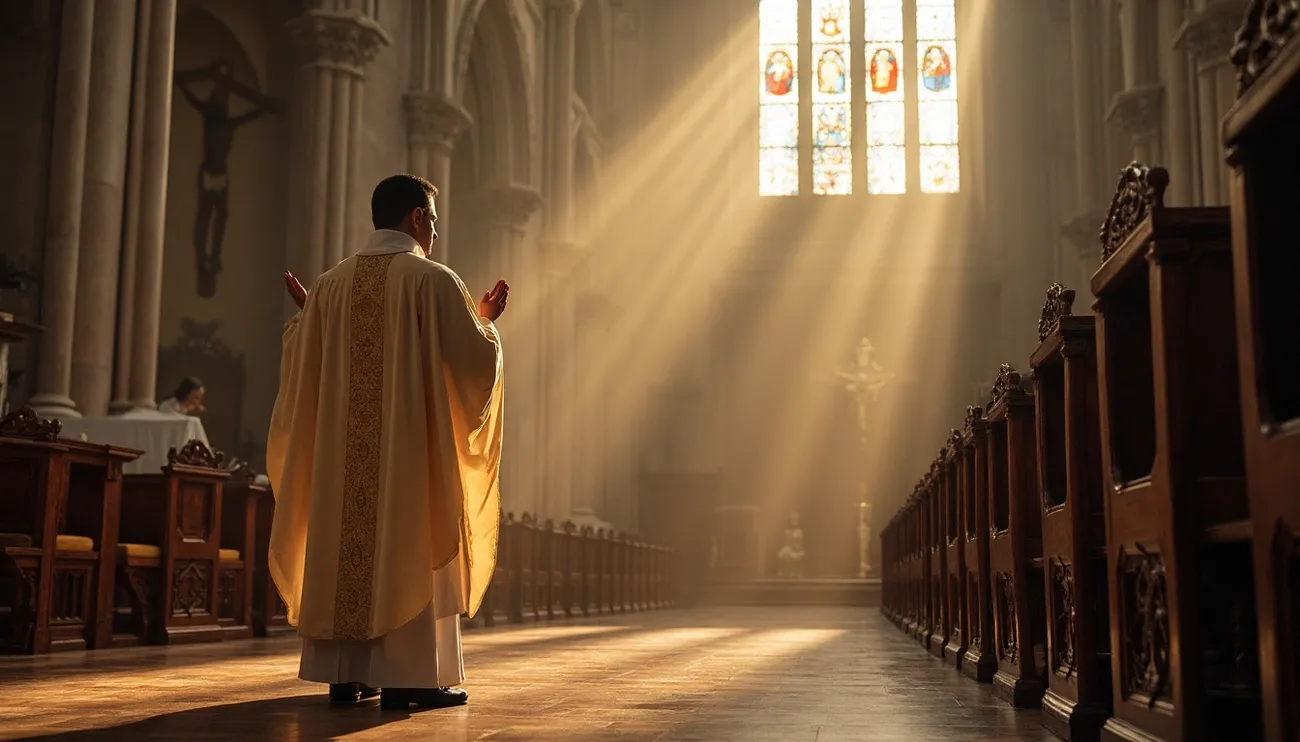
Throughout her history, the Catholic Church has grounded her teaching on the ordination of women on three fundamental pillars:
1) Christ chose only men as His apostles,
2) the Church has faithfully followed this example for two millennia, and
3) the Church’s teaching authority maintains this practice aligns perfectly with God’s divine plan.
In this article, I’ll explore why the Church teaches that priesthood is inherently connected to spiritual fatherhood. We will examine why a priest acts “In Persona Christi” (“In the Person of Christ”), a role that according to Church teaching requires male embodiment. I’ll also discuss Canon 1024, which states explicitly that “only a baptized man can validly receive sacred ordination.”
The question of women’s ordination touches on deep theological truths about the nature of priesthood itself. To understand the Church’s teaching, we must look beyond modern notions of equality and delve into the sacred mysteries that Christ instituted for His Church.
Why Jesus Chose Only Men as Apostles?
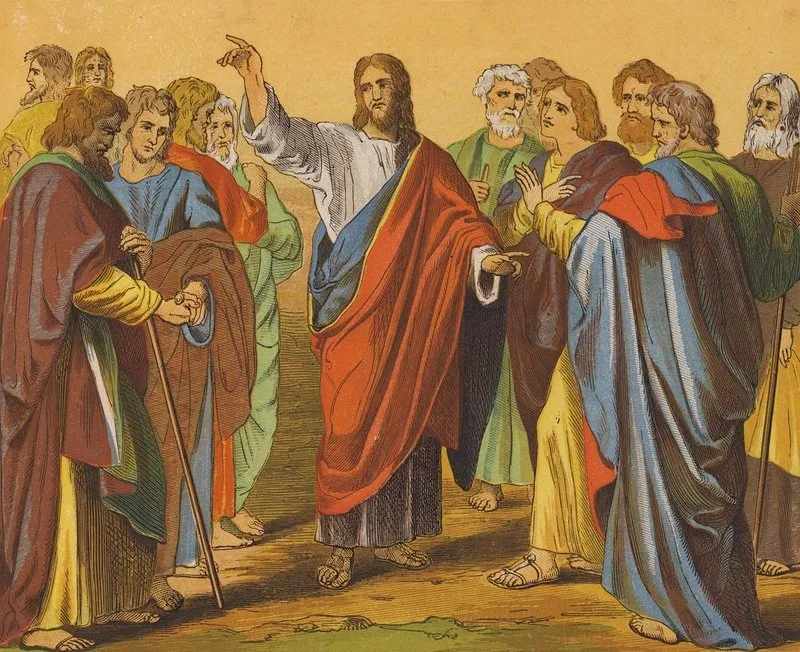
The Catholic teaching on a male-only priesthood finds its foundation in a simple yet profound historical reality – Our Lord Jesus Christ chose only men to be His Twelve Apostles. This choice was deliberate and carries immense significance, especially when we consider Jesus’ revolutionary treatment of women during His earthly ministry.
What Jesus’ actions with women countercultural?
Our Lord consistently broke cultural barriers in His interactions with the women of His time. Throughout His ministry, Jesus treated women with extraordinary respect in a society that marginalized them. Kenneth Bailey notes, “The place of women in the church has rightly received significant attention… Essential to this analysis is the way Jesus treated women” [13].
What made Our Lord’s approach truly revolutionary? He:
Spoke publicly with women, even those considered unclean or foreign, like the Samaritan woman at the well [14]
Called women “daughters of Abraham,” bestowing upon them spiritual status equal to men [8]
Allowed women to travel with His ministry group and learn from Him [13]
Women were the first witnesses to His resurrection, despite women’s testimony being considered worthless in that culture [8]
These actions reveal Our Lord’s profound respect for women. As one scholar observes, “Jesus’s attitude toward women laid the foundation that would guide the new community of believers in the values of the Kingdom of God” [13]. This makes His choice of only male apostles even more striking and significant.
What is the significance of the Twelve Apostles?
The number twelve was not chosen by accident but carried profound symbolic meaning. Jesus deliberately selected twelve men to represent the twelve tribes of Israel, establishing a clear connection between the Old Covenant and the New Covenant [4]. This selection wasn’t coincidental but deeply theological – the apostles represented the foundation of the New Israel, the Church.
These twelve men weren’t merely followers but were “hand-picked by Jesus to carry on His mission” [5]. They received special authority from Christ, including the power to heal and forgive sins. Peter, as chief apostle, was given “the keys to the kingdom of Heaven” (Mt. 16:19) and became the rock upon which Christ built His Church [5].
Furthermore, Our Lord understood that these men would become the first bishops of the Catholic Church, establishing an unbroken line of apostolic succession that continues to this day. Every Catholic bishop can trace his spiritual lineage directly back to one of these apostles [5]. This continuity reveals God’s divine plan for His Church throughout the ages.
Why Mary was not chosen despite her holiness?
Perhaps the most compelling evidence that Jesus’s choice was based on divine plan rather than cultural accommodation is that He didn’t select His own mother Mary for apostleship, despite her unparalleled holiness and closeness to Him.
Mary’s exclusion from the Twelve cannot be attributed to prejudice or cultural limitations. Throughout the Gospels, Jesus repeatedly challenged cultural norms regarding women. Additionally, women like Mary Magdalene demonstrated remarkable faith and understanding.
Let us consider this profound truth: if Our Lord had intended women to exercise priestly ministry, would He not have chosen His own mother – the most perfect and holy of all creatures – to be among the Twelve? Yet He did not do so. This wasn’t because women lacked capability or holiness, but because Jesus established a pattern that reflected God’s divine plan for the Church.
This choice forms the foundation for why women can’t be priests in Catholicism – not because of inequality, but because priesthood is connected to the apostolic office instituted by Christ Himself. The Catholic Church sees herself as bound by this choice made by her Divine Founder.
What is the Role of Tradition and Church Authority?
Tradition shapes Catholic teaching as profoundly as Scripture. The male-only priesthood stands among the Church’s oldest traditions, unbroken since the time of Christ himself. This historical continuity forms a cornerstone in understanding why women cannot receive priestly ordination in the Catholic faith.
1) Unbroken tradition of male-only priesthood
Throughout Church history, Catholic practice has consistently reserved ordination to men alone. This tradition remains “faithfully maintained by the Oriental Churches” as well. What makes this tradition particularly significant is that early Christians had every opportunity to institute female priests had they believed it aligned with Christ’s intentions. In the Greco-Roman world, priestesses were common in pagan religions, yet Christians deliberately maintained an exclusively male priesthood.
While early Christians broke with many Jewish customs as the faith spread beyond Palestine, they maintained the male-only priesthood despite cultural pressures. As the Congregation for the Doctrine of the Faith noted, they “could have envisaged conferring ordination on women if they had not been convinced of their duty of fidelity to the Lord on this point.”
I find it particularly noteworthy that this tradition has been so consistent that until recent decades, “the Magisterium has not felt the need to intervene in order to formulate a principle which was not attacked.” This 2,000-year practice reveals not merely cultural accommodation but divine design for the Church.
2) Canon Law and the Magisterium
The Catholic Church’s legal code explicitly codifies this tradition. Canon 1024 states unambiguously:
“A baptized male alone receives sacred ordination validly.”
This regulation isn’t merely disciplinary but reflects the Church’s understanding of sacramental theology at its deepest level.
The Magisterium—the Church’s teaching authority—consistently maintains that male-only priesthood belongs to the “deposit of faith.” This teaching authority consists of the Pope and bishops in communion with him, who together preserve and interpret Catholic doctrine.
Clerics, upon ordination, receive a special consecration and become “dispensers of the mysteries of God in service of His people.” Through the Magisterium’s consistent teaching, the Church understands herself “bound by this choice made by the Lord himself.”
3) Ordinatio Sacerdotalis and infallibility
In 1994, Pope John Paul II addressed this issue definitively in his apostolic letter Ordinatio Sacerdotalis. The timing was significant—he issued it on Pentecost Sunday, underscoring its theological weight. In this document, he declared:
“I declare that the Church has no authority whatsoever to confer priestly ordination on women and that this judgment is to be definitively held by all the Church’s faithful.”
The Congregation for the Doctrine of Faith subsequently clarified that this teaching belongs to “the deposit of the faith.” Cardinal Ladaria explained that this teaching isn’t merely disciplinary but doctrinal, pertaining to “the structure of the sacraments, which are the original place of encounter with Christ.”
Although Ordinatio Sacerdotalis wasn’t issued as an ex cathedra statement, the Church considers this teaching infallible through the ordinary universal Magisterium. This means that “when all bishops throughout the world, at any particular time in history, have concurred on some matter of faith and morals, teach it definitively, and in union with the Pope” that teaching is considered infallibly taught.
Subsequent popes have reaffirmed this position. Benedict XVI stated John Paul II declared this “in an irrevocable manner.” Similarly, Pope Francis confirmed in Evangelii Gaudium that “the reservation of the priesthood to males is not a question open to discussion.”
Thus, the question of female priests in Catholicism isn’t merely about tradition or cultural norms—it represents what the Church considers an unalterable element of its divine constitution, consistently taught and formally defined by the highest teaching authority of the Church. This shows the extent to which this teaching is embedded in the very fabric of Catholic understanding of priesthood and sacramental theology.
What is the Theological Meaning of the Priesthood?
The Catholic understanding of priesthood extends far beyond mere function or role. When we examine what priesthood truly means in Catholic theology, we discover profound spiritual realities that touch the very heart of our faith. Let us consider why the Church has always maintained that the priesthood carries a significance that cannot be separated from masculine identity.
1) Priesthood as Spiritual Fatherhood
At its core, the Catholic priesthood embodies spiritual fatherhood. Through the sacrament of Holy Orders, priests become “adopted fathers” to their communities – they baptize our children, hear our confessions, witness our marriages, and bury our deceased loved ones. This spiritual fatherhood begins when a man answers Christ’s call to detach from biological family ties for the sake of a greater spiritual family.
What gives this fatherhood its reality?
Just as biological fathers bring children into physical life, priests “acting in persona Christi“ bring forth spiritual children at baptism, born from the mystical union of Christ and His bride, the Church. The priest nourishes these spiritual children with the Eucharist and the Word of God, mirroring how natural fathers provide nourishment to their biological children.
This responsibility carries immense weight.
Priests must “point always to heaven, inspire the faithful to its lofty heights and equip, empower and enable the faithful to get there.”
Like all fathers, they must model the Christian life while humbly acknowledging their own need for God’s mercy when they fall short.
2) Acting In Persona Christi
When the Church speaks of priests acting “in persona Christi,” we are encountering something profoundly mysterious. The priest does not merely represent Christ as an ambassador might represent a king. Rather, he serves as a living sacramental symbol of Jesus Himself.
During the Holy Mass, especially at the moment of consecration, the priest symbolizes Jesus specifically in His role as Bridegroom of the Church. As Cardinal Pell wisely noted, “the priest is not the center of the show” – the focus remains entirely on Christ Himself working through His chosen instrument.
The Catechism explains this beautiful mystery:
“Now the minister, by reason of the sacerdotal consecration which he has received, is truly made like to the high priest and possesses the authority to act in the power and place of the person of Christ himself.”
This is not merely symbolic representation but sacramental reality.
Why Gender Matters in Sacramental Signs?
Throughout the Scriptures, the notion of gender carries profound theological meaning. The relationship between Christ and His Church is consistently portrayed as a marriage – Christ is the Bridegroom, and the Church is His Bride. This imagery is not incidental but fundamental to understanding our relationship with God.
During the Eucharist, this marital symbolism reaches its fullest expression as “the two become one flesh” in a literal, mystical sense. The priest, representing Christ the Bridegroom, gives spiritual life to the faithful – the Bride. This nuptial imagery requires male priesthood because “only men can symbolize His marital relationship with the Church; only men can represent Jesus as our Bridegroom.”
This reveals something crucial about the Church’s teaching: women cannot be priests not because they lack ability, intelligence, or holiness, but because they cannot be what a priest is sacramentally meant to be – a sign of Christ in His specific role as Bridegroom of the Church.
The sacramental signs instituted by Christ are not arbitrary. They communicate profound realities that connect us across time to Christ Himself. In these signs, matter matters – water for Baptism, bread and wine for Eucharist, and yes, masculine identity for Holy Orders.
What are Common Objections and Misunderstandings?
When discussing why women cannot be priests in the Catholic Church, several objections and misunderstandings frequently arise. These deserve careful examination in light of Church teaching, Scripture, and historical context. Let us consider the most common questions that arise on this matter.
What does the Bible say about female priests?
Those seeking biblical support for women’s ordination often cite Scripture passages selectively. As we read in the Scriptures, women like Miriam, Deborah, and Huldah held leadership positions within ancient Israel. However, nowhere does Scripture prescribe priestesses within God’s covenant community. The Bible must be read as a whole, not in isolated verses removed from their proper context. This holistic interpretation method has guided the Catholic Church’s understanding of sacred texts since the time of the Apostles.
What about Galatians 3:28 and equality in Christ?
Perhaps the most frequently cited passage in discussions about women’s ordination is Galatians 3:28: “There is neither Jew nor Greek, slave nor free, male nor female, for you are all one in Christ Jesus.” However, this verse discusses our justification through faith, not ministerial roles within the Church. The Church Fathers consistently interpreted this passage as addressing salvation equality, not functional interchangeability within the Church’s hierarchical structure.
St. Augustine commented that while faith unites us equally as children of God, “differences remain embedded in our mortal interactions.” This shows the early Church’s understanding that equality in dignity does not necessarily mean identical roles in ecclesial life.
What about early Church deaconesses and their role?
Another misunderstanding involves the role of deaconesses in the early Church. From approximately the third century, certain regions had deaconesses who primarily assisted with baptizing women for modesty’s sake. As Epiphanius of Salamis (375 AD) explained, this order existed “not to exercise the functions of a priest… but for the decency of the feminine sex at the time of baptism.”
Their ministry focused mainly on charitable service to women, carrying out certain anointings, and instructing female neophytes in the faith. It is important to note that these were not ordained roles comparable to the male diaconate but rather special functions created to address practical needs within the Church community.
Is the Church being sexist?
Many today perceive the male-only priesthood as a form of discrimination or sexism. Yet the Church fundamentally rejects this characterization. As Pope John Paul II explained in his writings, this teaching isn’t based on any notion of male superiority or female inferiority. Rather, both sexes possess equal dignity before God but are called to different yet complementary roles within His divine plan.
Pope Francis addressed this matter directly when he stated:
“The dignity of women is mirrored in the Marian principle” rather than the ministerial “Petrine principle.”
This profound insight reveals the complementary nature of vocations: women bring the body of Christ (souls) into the world through their nurturing and life-giving nature, while priests bring the body of Christ (Eucharist) to the faithful—different yet equally essential vocations.
The Church maintains that true equality doesn’t mean sameness in function but rather equal dignity expressed through distinctive contributions to the Body of Christ. Throughout Catholic theology, the recognition of different roles has never implied a hierarchy of worth or dignity.
The Role of Women in the Church Today
The Catholic Church, while maintaining her teaching on the male priesthood, continues to expand opportunities for women’s participation throughout her institutions. Vatican statistics reveal remarkable growth in female presence, with women now comprising 23.4% of the Vatican workforce [15], up from 19.3% in 2013. Within the Curia specifically, one in four employees (26%) is female [15]. These numbers reflect a continuing development in how women serve within the Church’s structures.
A) Leadership roles available to women
Today’s Church offers women numerous leadership avenues. Sister Raffaella Petrini serves as the first-ever female secretary general of Vatican City State [15], overseeing healthcare systems, police forces, and the Vatican Museums – a position of significant administrative authority. Pope Francis has taken the extraordinary step of appointing women to the Dicastery for Bishops [15], allowing them to help evaluate candidates for episcopal roles. At diocesan levels throughout the world, women now head chancery offices and make up majority percentages in many bishop’s cabinets [1].
This represents an ongoing development in understanding how women’s gifts can be more fully recognized and integrated into Church governance without altering the sacramental nature of Holy Orders.
B) The unique vocation of women
The Church teaches that women and men possess “a true equality regarding dignity and action” [3] yet fulfill complementary roles in God’s divine plan. As John Paul II so beautifully emphasized, women offer what he called “the feminine genius” [16] – a unique perspective vital to Church life. This understanding recognizes that equality does not require sameness of function.
What is this complementarity?
The Church recognizes that “only women can give physical life by serving as mothers,” parallel to how “only men can give spiritual life by serving as priests” [17]. Through this lens, women like Mary embody “the fullest extent of the maternal calling” [17]. Through consecrated life, many women take vows emphasizing prayer, service, and community living [18], serving in youth ministry, education, healthcare, and countless pastoral roles.
What emerges from this exploration is a picture of the Church continuously seeking to honor women’s dignity and gifts while remaining faithful to the deposit of faith received from Christ Himself. The question is not whether women should have important roles in the Church – they already do and always have – but rather how these roles continue to develop within the framework of Catholic theology.
Conclusion
Throughout our exploration of the Catholic Church’s teaching on male priesthood, we’ve seen that this doctrine rests upon three foundational pillars. First, Our Lord Jesus Christ deliberately chose only men as His apostles despite His revolutionary treatment of women. Second, the Church has faithfully maintained an unbroken 2,000-year tradition of male-only priesthood. Finally, the theological understanding of priesthood as spiritual fatherhood requires the priest to act in persona Christi as the bridegroom of the Church.
This teaching, while countercultural in our modern times, doesn’t diminish women’s dignity or importance. As Catholics, we believe women possess equal dignity with men while fulfilling complementary roles in God’s divine plan. The Church continues to expand leadership opportunities for women at all levels of Church governance.
Many objections to this teaching stem from misunderstandings about equality. The Church teaches that equality in dignity doesn’t necessitate identical roles. Male priesthood ultimately reflects the sacramental nature of the Church rather than discrimination. This helps explain why the Vatican has definitively declared this teaching cannot change – it belongs to the deposit of faith and is part of what we as Catholics must hold.
Catholic women make profound contributions through their unique vocations. Their service in leadership roles, consecrated life, and what Pope John Paul II called the “feminine genius” remains essential to Church life.
The Catholic Church thus maintains her teaching not from prejudice but from fidelity to Christ’s example, apostolic tradition, and theological understanding of the priest’s role. To understand this fully requires us to look beyond modern political debates about equality and instead contemplate the divine mysteries established by Christ Himself for His Church. This reveals not a position of inequality, but rather a divine plan with complementary vocations, each with its own profound dignity and purpose.
God has ordered His Church with wisdom beyond our comprehension, establishing different roles that reflect the unique gifts He has bestowed upon men and women. In this divine plan, we find not limitation but the beautiful diversity through which the Body of Christ functions as a whole.
FAQs
Q1. Why does the Catholic Church only allow men to be priests? The Catholic Church maintains that Jesus deliberately chose only men as his apostles, establishing a tradition that has been upheld for 2,000 years. This choice is seen as part of God’s divine plan for the Church, reflecting the theological understanding of priesthood as spiritual fatherhood.
Q2. Doesn’t the exclusion of women from priesthood contradict gender equality? The Church teaches that men and women have equal dignity but different roles in God’s plan. This distinction is not based on superiority or inferiority, but on the complementary nature of male and female vocations within the Church.
Q3. Are there any leadership roles for women in the Catholic Church? Yes, women hold numerous leadership positions in the Church. They serve in Vatican offices, head diocesan chanceries, and make up significant percentages of bishops’ cabinets. Women also play crucial roles in education, healthcare, pastoral care, and various ministries.
Q4. What does the Bible say about women priests? While the Bible shows women in leadership positions, it doesn’t prescribe priestesses in God’s covenant community. The Church interprets Scripture holistically, considering Jesus’ choice of male apostles as significant for the priesthood’s structure.
References
[1] – https://www.cbeinternational.org/resource/jesus-and-women-a-close-look-at-the-gospels/
[2] – https://www.franciscanmedia.org/st-anthony-messenger/jesus-extraordinary-treatment-of-women/
[3] – https://www.crossway.org/articles/how-jesus-viewed-and-valued-women/?srsltid=AfmBOor4Wn2XrC8wk_2RjnhgDqnf4z8yrR_sJMbrBXM89GxfxMIbccK-
[4] – https://stpatricksjaffrey.com/hrf_faq/twelve-tribes-and-the-twelve-apostles-what-is-it-significant-that-christ-chose-twelve-apostles/
[5] – https://www.mycatholicsource.com/mcs/pcs/the_apostles.htm
[6] – https://ebible.com/questions/20461-was-mary-magdalene-considered-an-apostle-or-a-disciple
[7] – https://www.americamagazine.org/faith/2023/03/09/pope-women-vatican-roles-resistance-244872
[8] – https://catholickey.org/2025/02/03/more-women-are-leading-in-todays-church/
[9] – https://chrismpress.com/female-religious-in-the-catholic-church-an-evolving-role/
[10] – https://uscatholic.org/articles/202303/does-the-catholic-church-really-believe-women-are-people/
[11] – https://www.catholic.com/magazine/print-edition/does-the-church-oppress-women-an-appreciation-of-the-feminine-genius
[12] – https://www.catholic.com/qa/what-is-the-catholic-view-of-women
[13] – https://www.usccb.org/beliefs-and-teachings/vocations/discerning-women
[14] – https://www.ncronline.org/francis-institutes-commission-study-female-deacons-appointing-gender-balanced-membership
[15] – https://www.usccb.org/news/2024/vatican-doctrinal-chief-tells-synod-its-not-time-women-deacons
[16] – https://www.reuters.com/world/catholic-church-split-women-deacons-vatican-document-shows-2024-07-09/


